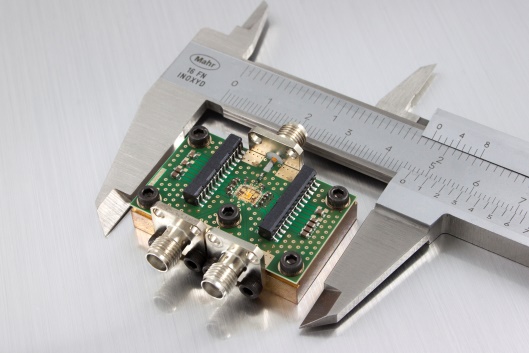
The increased data rates of 5G mobile communication will meet user demands in urban areas and make efficient use of today’s limited bandwidth. However, the technologies required for 5G communication will differ vastly in terms of energy efficiency, agility, bandwidth, RF output power, frequency usage, and latency. The extremely efficient, flexible solutions developed at Leibniz FBH are a crucial step toward meeting the requirements of future 5G systems up to the mm-wave range. The semiconductor technologies applied in their development are based on in-house GaN and InP processes for highest output power in the mm-wave range. Two main strategies are pursued: (1) improving back-off efficiency with GaN-based envelope tracking systems and a fully digital transmitter; (2) developing InP-based components for a mm-wave 5G infrastructure with unprecedented performance. The first approach requires very efficient GaN switching stages, the design and fabrication of which Leibniz FBH now specializes in. Game-changing results have been achieved, including back-off efficiencies superior to established solutions. The second main strategy has also yielded results, including the realization of front-end components for future 140 GHz 5G wireless networks.
 Fraunhofer Group for Microelectronics in cooperation with the Leibniz institutes IHP and FBH
Fraunhofer Group for Microelectronics in cooperation with the Leibniz institutes IHP and FBH